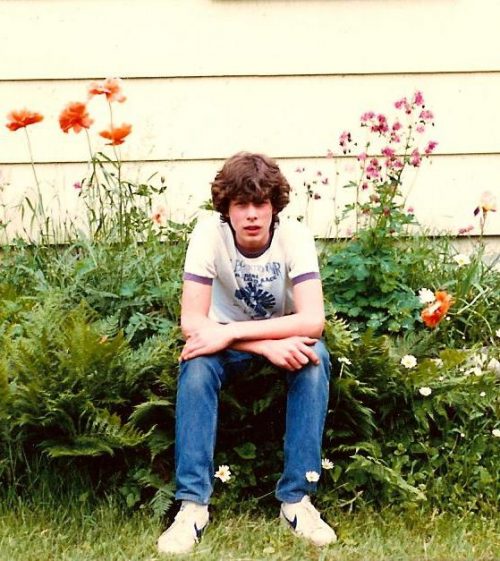The first time I tried a Celsius energy drink, it made me sick. Cold, fizzy, grapefruit-flavored liquid charged my body with 200 milligrams of caffeine. My hands trembled, and my skull pulsed with a violent headache.
Rationally, I should never have opened up another can, but the fruity flavor that coated my tongue triggered an intoxicating dopamine response. So, here I am, a chronic Celsius drinker. I finally moderated my consumption, but for years, I worried about the beverage’s effects on my body and bank account as I guzzled it daily. What began as an occasional indulgence morphed into an ugly habit. I became begrudgingly, dutifully dependent on the sleek aluminum cans of human-grade jet fuel.
I consumed Celsius for the reliable jolt it promised in each 12-ounce serving — provided by more caffeine than I’d ingest in roughly similar amounts of coffee. I drank it before track meets and tough weightlifting sessions. Still, no amount of physical exertion seemed able to burn off the boost, and I struggled to fall asleep as the caffeine lingered in my veins, causing a chronic case of the jitters.
The same goes for my peers: Eighteen- to 24-year-olds, the target customer base for Celsius, can’t seem to get enough. Our increasingly anxious cohort is mindlessly slurping carbonated caffeine bombs to keep ourselves alert at all hours of the day, aggravating our nervous systems and exacerbating our existing stress.
It’s not that coffee has become less popular; we still drink warm cups of joe in the morning, but we switch to energy drinks in the afternoon. So what’s up with all this caffeine?
Americans have long had a love affair with coffee, but the energy drink craze among young people appears to have become deeply ingrained.
When I asked my fellow students at the University of Florida, and a nearby school, Florida State University, about their Celsius consumption, one person said the drink appeals to young consumers “because we’re all tired and burnt out before we’re even 30.’’ This sentiment, while darkly humorous, is not entirely exaggerated.
Hustle culture, rampant across corporate America and higher education, celebrates the constant spin of the productivity hamster wheel; it also endorses the notion that sleep is for the weak and unambitious. For many, staying up around the clock has become synonymous with success and being “wired’’ is a necessary evil. Students and professionals with intense work pressures and near-impossible deadlines find Celsius, coffee, and any other source of caffeine instrumental to their daily lives. Of course, the drink is not all sunshine, rainbows, and a vehicle for maximum efficiency. If a single can becomes two or three a day, which is common among my peers, a slew of deleterious health effects may follow. Experts say consuming up to 400 milligrams of caffeine a day — about 3 or 4 cups of coffee or two Celsius drinks — is generally safe, but many of us exceed that recommended limit.
A 2016 study published by the Journal of Caffeine Research found that college-age people who regularly consume energy drinks are more likely to experience disturbed sleep and suffer from anxiety than those who do not. In fact, resisting rest with caffeine can be more detrimental to long-term health than skipping that extra hour of homework. Instead of equipping the body and mind to achieve academic and athletic success, excess caffeine hampers motor and cognitive function.
Celsius, now the fastest-growing energy drink brand, hardly made a splash when it launched in 2004, but its popularity has since exploded. Bright-colored packaging and enticing flavors like Tropical Vibe, Kiwi Guava, and top seller Peach Vibe are especially appealing to Gen Z consumers. The brand also captures health-conscious gym rats by embracing the viral wellness culture with label claims like “accelerates metabolism’’ and “burns body fat.’’ The company also pays professional and collegiate athletes to endorse its products on social media, attracting a loyal base of TikTok-enamored teens. According to the Mayo Clinic, energy drinks are upstaged in popularity only by multivitamins as a dietary supplement among US teenagers and young adults.
Of course, Celsius is only the latest in a long line of dubious energy drinks. When Red Bull hit the US market in 1997, college students began arming themselves with trusty cans of the drink as they entered the football stadium or library. At parties, they started mixing the energy beverage with vodka in a fierce cocktail tailor-made to bring on a hangover with 37 grams of sugar, 80 milligrams of caffeine, and 40 percent alcohol by volume. But believe it or not, the amount of energy in this fusion from hell pales in comparison with the ever-increasing amounts of caffeine in Monster, Bang, Reign, and Celsius drinks. Each can contain up to three times as much caffeine as the now quaint Red Bull and six times as much as Coca-Cola.
The Celsius takeover is easily observable on my campus at the University of Florida. I’ve seen students in my early morning classes forgo coffee for Green Apple Cherry to start their day. It makes sense: PepsiCo supports the university with sponsorships, promotions, and scholarship dollars, and the corporation recently invested $550 million in Celsius; the energy drink is now abundantly available in dozens of our school vending machines.
Brandon Rahim, 22, says of the brand’s ubiquity at the university, “The culture around Celsius keeps college-aged students engaged. [It’s] already infiltrated the Greek institutions through advertising and PR events, and the drinks are very sweet . . . so people see it as a good deal.’’
While a can of sparkling Peach Vibe is not the guiltiest of guilty pleasures, the actual cost of consumption is not just the $3 price. An “always on’’ mentality and a deep-seated cultural obsession with productivity has caused an entire generation to slurp excess caffeine like it’s going out of style — which, by all measures, seems unlikely. But if my peers and I genuinely want to stave off fatigue and accomplish more each day, nature has a simple salve: a good night’s sleep.
Natalie Kaufman is a rising sophomore at the University of Florida’s College of Journalism and Communications.

